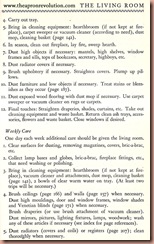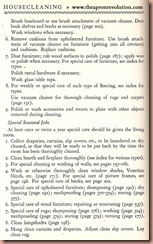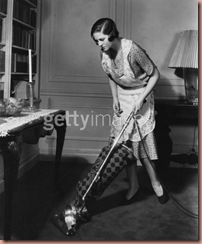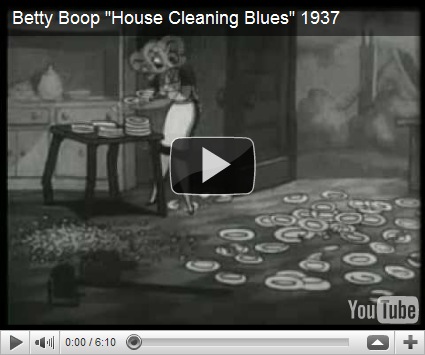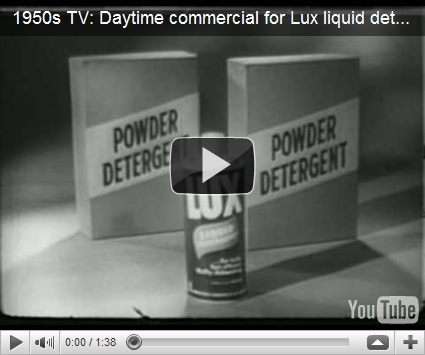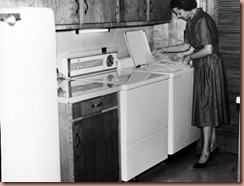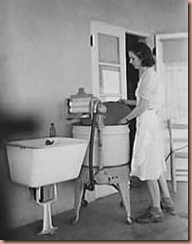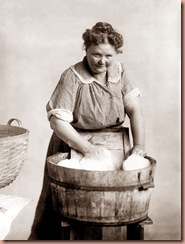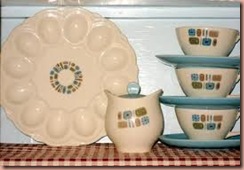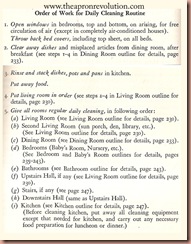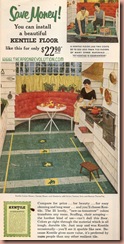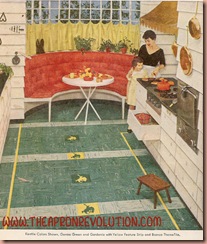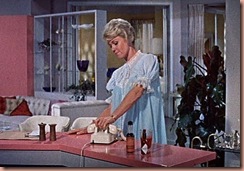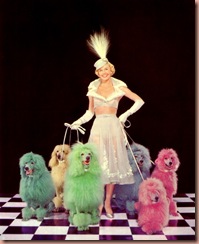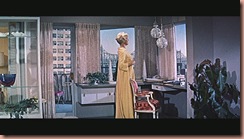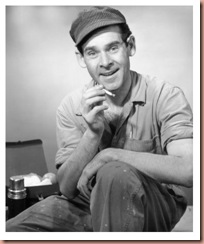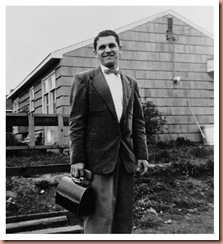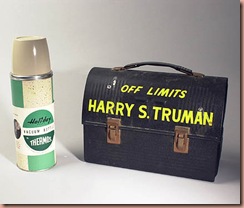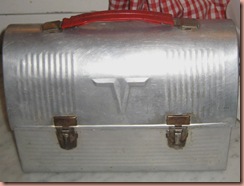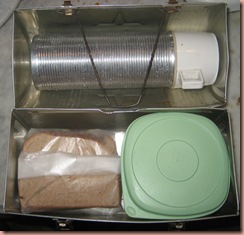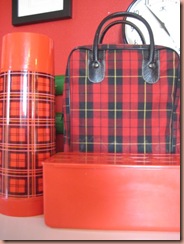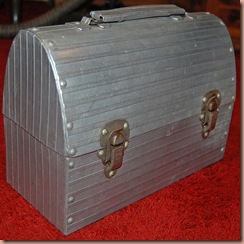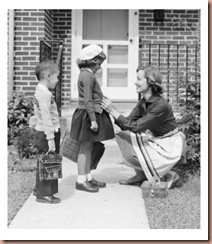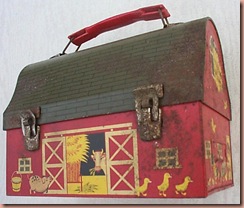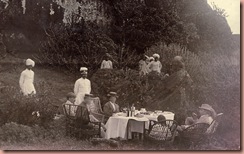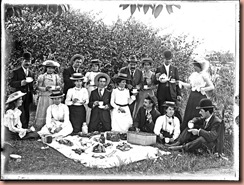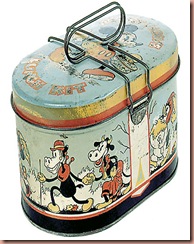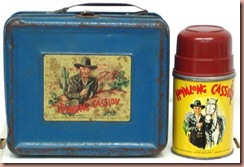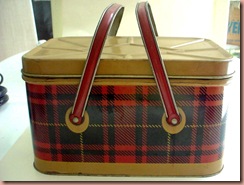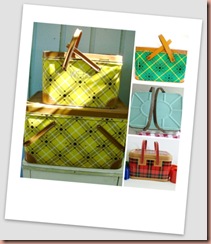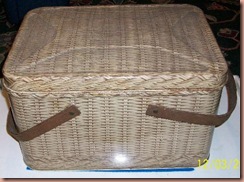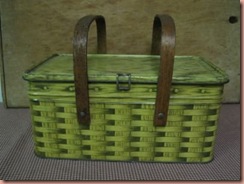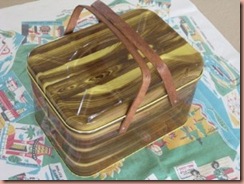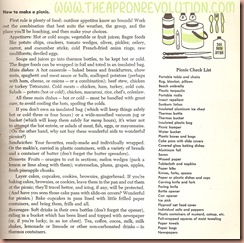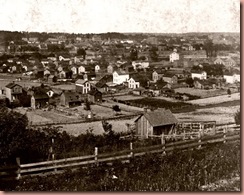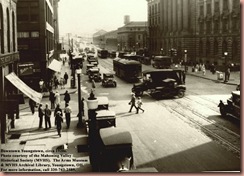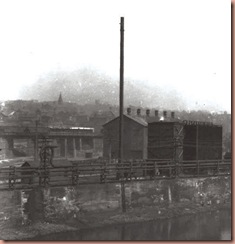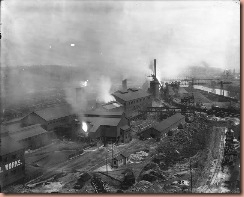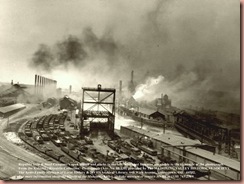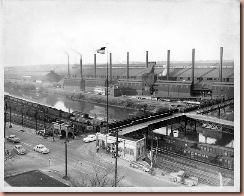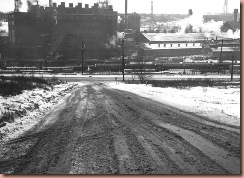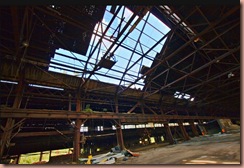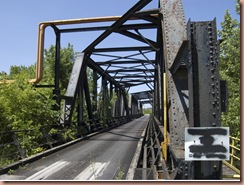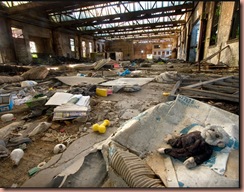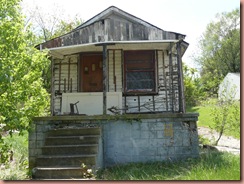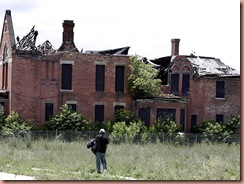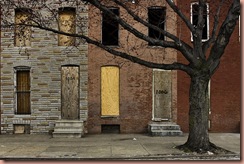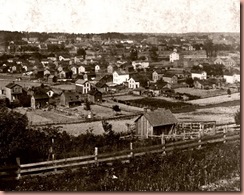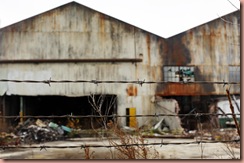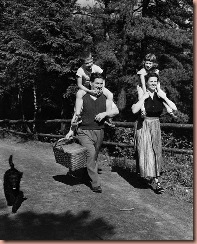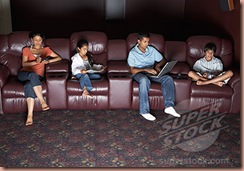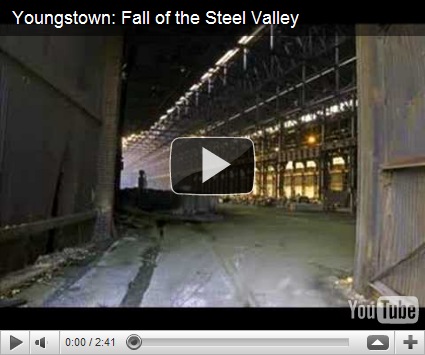In my last post I shared the basic list of daily/weekly cleaning from my 1947 America’s Housekeeping Book. It has a breakdown of the separate rooms in more detail so I shall share these with you over the next few posts, as many of you mentioned you would like to see them.
Today is the detailed Living Room lists, enjoy.
Today I wanted to make an easy ‘breakfast in bed’ for hubby and I. I am an early riser so on Hubby’s day off, I am always up with the dogs early and about my day. This morning, as I have much work to do still plugging away on my book, I thought I’d throw together an easy to eat in bed breakfast.
I made my simple biscuit recipe to make bacon egg breakfast sandwiches and fresh chocolate chip scones. Both easy to eat in bed as really no utensils are needed. I simply put some butter on top of the scones, poured out a thermos of coffee and brought it up on a tray. We really enjoyed it.
Hubby is always appreciative of such morning breakfast surprises. It works wonders for me, because then he is feed and can lounge about in bed with his coffee and books and I can get back to work in my little office. He says I spoil him, but I always remind him that my getting to be home while he has to deal with traffic and work certainly a fair trade. At least, I think so.
Here is my recipe:
50’s Gal Easy Biscuit/Scone recipe
2 cups flour
2tsp baking powder
1/4 tsp salt
1/4 tsp baking soda
7 TBS butter or lard
[3 TBS sugar for scones, none for biscuit]
1/2 cup buttermilk (If you haven’t butter milk add 1 TBS vinegar to 1/2 cup milk let sit one minute)
1 egg
1 TBS cream
(To this add choc chips, fruit, candied ginger, whatever you like about 1/2 cup for ‘flavored’ scone. Leave plain for Biscuit)
Preheat oven to 425 F
Mix dry ingredients and then cut in butter/lard. A pasty cutter is helpful, if you haven’t one two knives work wonders. For the final mix I use my hands to quickly crumble. But do not play with pastry dough as the heat of your hands stops it from rising (This is oppositely true for breads). Those chunks of butter you see through the dough is what gives it a lovely rise. Add fruit/add ins now.
Make a well in the center and pour in your milk/egg mixture which you can mix together with a whisk. I prefer to mix the wet ingredients in a 2 cup Pyrex measuring cup, as it is easy to whip it then.
Roll out on a floured surface. I mostly push it into a circular shape and give a quick one or two rolls with the rolling pin, don’t overwork it. If you haven’t a biscuit cutter, an upturned glass works as does measuring cups. Then you can cut the the size you like. You can also roll out a circle and cut into pie shapes.
For Scones, brush top with cream and sprinkle with sugar, for biscuits, leave as is. Bake for 10 –12 minutes. You want them to look a little undone but just the hint of brown on top. Things continue to cook when removed from the oven.
Enjoy!
As I was making this batch to be both a savory biscuit as well as a sweet scone, I mixed it up without the sugar, rolled it out and cut two biscuits. Then returned to the bowl and added chocolate chips and sugar.
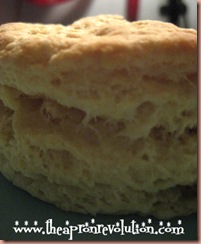 Here is the lovely biscuit up close. You can see how nicely this recipes rises.
Here is the lovely biscuit up close. You can see how nicely this recipes rises. Though this may not look that lovely, it tasted like heaven. I like to crisp up the edges of the eggs for a sandwich like this. I cooked the bacon first and then cooked the mushrooms and egg in the bacon fat. It is wonderful this way and needs no condiments in my opinion. I did add cheese to the add as it was cooking to melt.
Though this may not look that lovely, it tasted like heaven. I like to crisp up the edges of the eggs for a sandwich like this. I cooked the bacon first and then cooked the mushrooms and egg in the bacon fat. It is wonderful this way and needs no condiments in my opinion. I did add cheese to the add as it was cooking to melt. Here is the Chocolate Chip Scone result from the same batch. They are so good warm with clotted cream and jam. They also are lovely just as is and cold in hubby’s lunchbox.
Here is the Chocolate Chip Scone result from the same batch. They are so good warm with clotted cream and jam. They also are lovely just as is and cold in hubby’s lunchbox.
The continued interest I find in these terms “Biscuit” “Scone” “Cookie” that differ for American’s and English always fascinate me. Obviously Biscuits in England are our cookies, so the idea of a bacon egg sandwich on a ‘biscuit’ must sound upsurd. Yet, our Biscuits are in every way simply a savory scone, or sans sugar.
I had begun to wonder if these were simply an American invention, but recently found out that during the Victorian times there was a from of unsweetened scone made and rolled out and cut (rather like store bought biscuits that you tear apart and break). I cannot find the article now, so I don’t recall what they are called. They were mainly used among the working classes as an easy bread to take along or serve with stews and such. This obviously are our biscuits and probably came over with the onslaught of Irish and English Immigrants during the Victorian time. And, for whatever reason, died out in England. At least I don’t think they are still used there, but any English reader can correct me.
Now, why do American’s call them Cookies? (Which I believe they use the term in Canada as well). Interestingly enough the name derives from the Dutch word koekje or (informal) koekie which means little cake. The Dutch settled much of the New York and various New England areas here in America so there you go.
I believe a Scottish Cookie is somewhat more similar to our biscuit, but not quite exactly. Any Scottish followers want to chime in on this one?
I am always fascinated by the differences in terminology of the English languages in different nations. Theodore Roosevelt in his time as president around 1906 also had his hand in changing our American spelling by dropping “U” from words like Colour: Color. Prior to that American and English spelling was the same. He even had dictionaries change the spelling and there was a debate in congress over it. It was ruled against this change, but it was too late and here we are, with no HUMOUR only HUMOR.
I have noticed, however, that here in New England I often see English spellings used such as Theatre instead of the American Theater. Another interesting thing I see often is the ‘quaint’ spelling of Shop as “SHOPPEE” . This is often used on antique or old soda fountains. This is actually middle English, which could have been part of the vocabulary of the early British Settlers to Massachusetts in the 1600’s. It is all so very interesting, at least to me. But, I digress…
I am bound and determined to keep plugging away with my little book. I certainly knew it would be a lot of work, but I am so amazed at how much these past two years of my Homemakers career has influenced not only my style, but my ability to work. I can say without any doubt that prior to my sojourn to 1955 two years ago, I was colossally lazy, at least comparative to my present abilities. And certainly, if I can change, anyone can.
I could spend house watching TV or wasting time online. I could sit in cafe’s for hours and linger uselessly in my studio. Now I find a real joy and excitement in working. Though many days I face my little deadlines with dread, I always tell myself, “Well, just get started, achieve this much and then have your tea break”. This usually gives me the motivation to go forward. Then, of course, I have my home duties to attend, so that always lights a fire under me to ‘get to work’ as I will still have dinner to prepare and the various chores for that day depending on what that day is (Laundry day and so on).
I feel, even if my first attempt is rather amateurish or even seen as silly, I will feel I have made a step in the right direction. And then my next book in that vein can only improve, at least I hope so.
I hope all are having a great day and Happy Homemaking.



